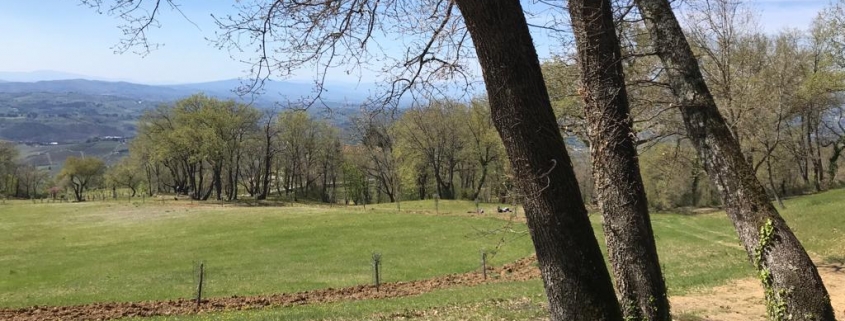The Fontesanta Park
The Fontesanta Park is located on Poggio Firenze and represents an “ecological niche” of extraordinary importance for the geographical and environmental context of the area.
In fact, Poggio Firenze, despite being located more than 90 kilometers from the Tyrrhenian Sea and at 690 m in altitude, is home to flora generally found in coastal areas.
This peculiar phenomenon can be explained by following the air currents from the Lion and Glascony gulfs as they travel through the Arno valley from the Versilia coast, finally reaching these very hills. These Atlantic currents are considered to be the reason why these microclimates are formed, leading to the flourishing of species that typically only grow in coastal environments, like the Ulex europaeus (commonly known as “scardiccio“), the Citus scoparius, rosehips, arbutus and many other species.
The Fontesanta Park was created in the ’60s with the aim of protecting and conserving this territory rich with botanical and historical qualities of great value.
As the name suggests, a fresh and clean water spring can also be found within the park. It is not known when and why adjective “Santa” was added to “Fonte”. However, from antiquity water that flowed from underground springs had been perceived as something magical or supernatural, to such a degree that this phenomena was also attributed a sort of sacredness.
It is sure that the spring and the shrine that now protects it have ancient origins due to the fact that it is located along the old Roman road called Via Maremmana. The pastors, travelers and wayfarers who traveled along the path would have found shade and refreshment in this area. The pleasant features of the zone, in fact, are well documented. The location is included in the memoirs of a group of noble Florentines, who resided in the villas in the Antella area in the middle of the 16th century, called the Arcadia dei Pastori Antellesi. The group was a mix of poets, writers and scientists (including a young Michelangelo Buonarrotti) that had chosen Fonte Santa as their chosen venue for meeting and reciting poetry.
In later periods the spring was at the center of the works for the creation of an aqueduct for water distribution. The first example is the 1698 construction of a Medici aqueduct that arrived at the Lappeggi Villa from Fonte Santa, uniting the flows of 10 other sources and able to supply water to the surrounding areas as well.
Around the second half of the 1930s work was begun on the construction of the Rifugio di Fonte Santa, a sanctuary for excursionists and travelers. The structure, affectionately called “casina“, was built thanks to the efforts of the residents of Antella that worked on the project for free every Sunday. Today the sanctuary is a destination and meeting place for numerous excursionists and trekking enthusiasts, not to mention the location of an annual antifascist commemoration.
This post is also available in: Italian


